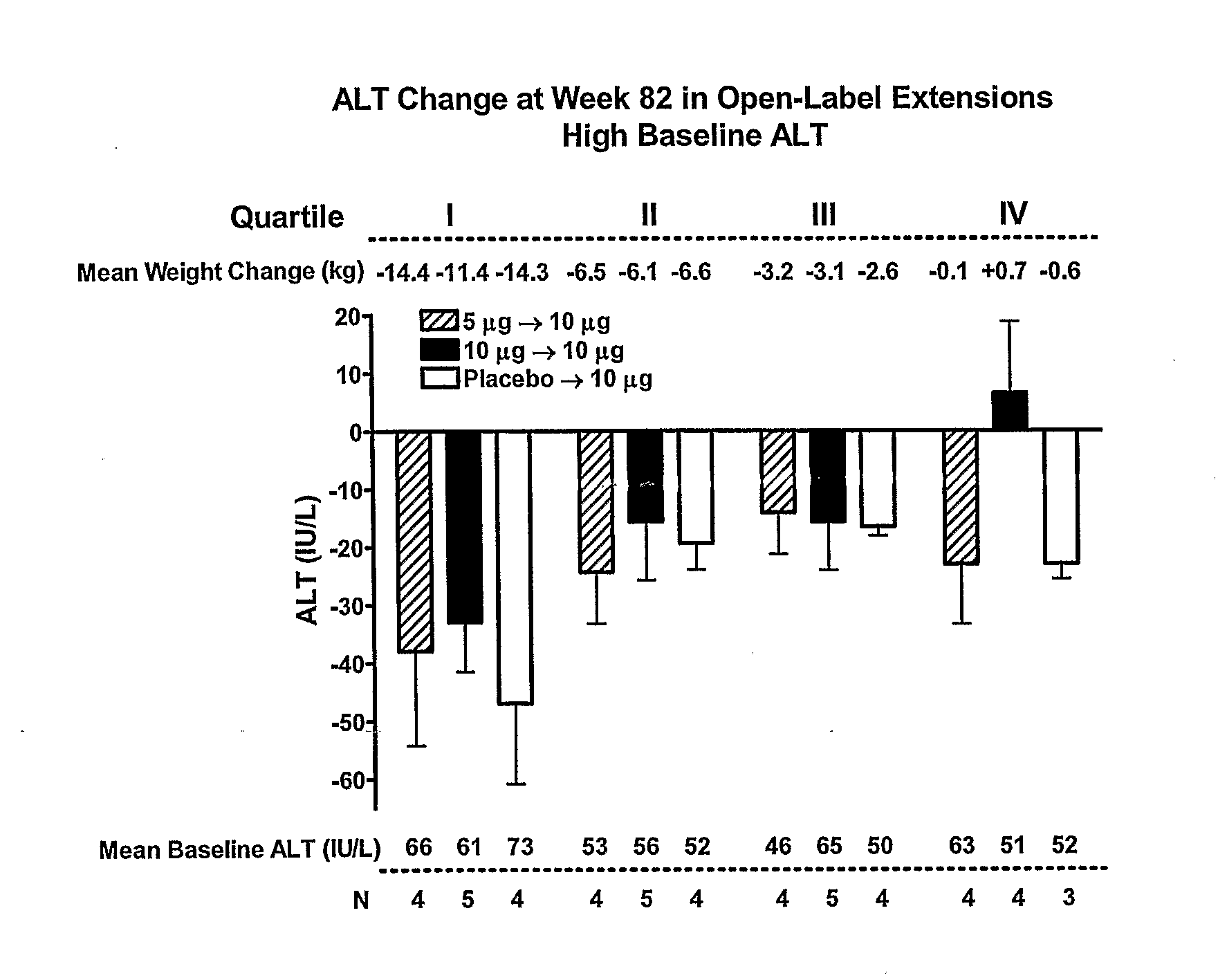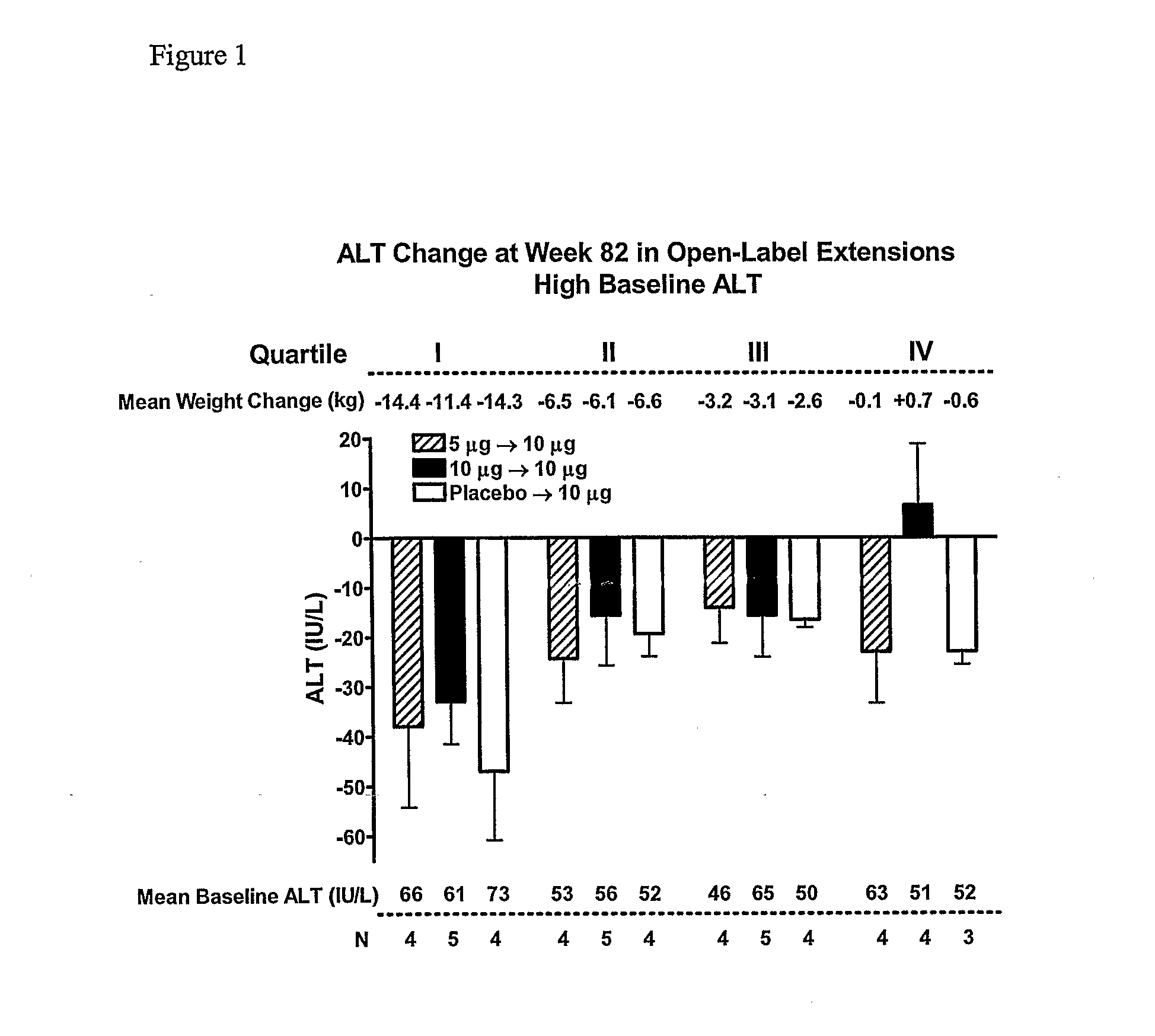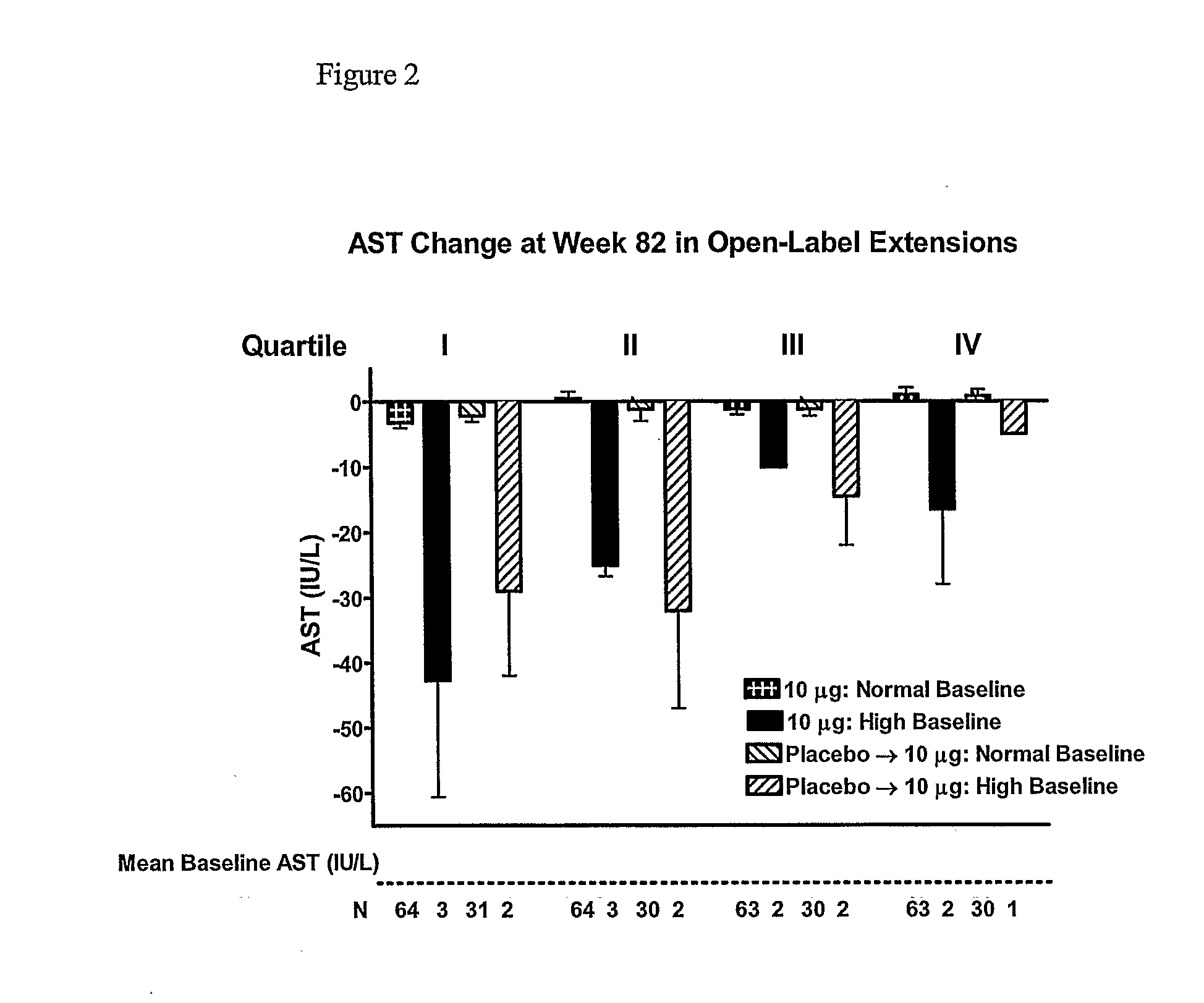Uses of Glucoregulatory Proteins
a technology of glucoregulatory proteins and glucoregulatory proteins, which is applied in the field of use of glucoregulatory proteins, can solve the problems of difficult and often confusing difficult clinical management of these diseases and conditions, and cumbersome initiation of insulin therapy, so as to stimulate the release of insulin and promote regeneration of beta cells
- Summary
- Abstract
- Description
- Claims
- Application Information
AI Technical Summary
Benefits of technology
Problems solved by technology
Method used
Image
Examples
example 1
Treatment with a Glucoregulatory Molecule Exendin, Ameliorates a Metabolic Disease as Described Herein
[0266]In three placebo-controlled, 30-week, phase 3 clinical trials and a cohort followed in open label extensions (n=393, 62% male, age 56+ / −10 years, HbA1C of 8.3+ / −1.0%, BMI of 33.7+ / −5.7 kg / m2; mean+ / −SD), exenatide (at 5 or 10 microgram BID SC) improved glycemic control and reduced body weight in subjects with type 2 diabetes unable to achieve glycemic control with metformin, sulphonylurea, or both.
[0267]Patients. Main inclusion criteria for the three 30-week trials have been detailed elsewhere (Buse et al., Diabetes Care 27:2628-2635 (2004); DeFronzo et al., Diabetes Care 28:1092-1100 (2005); Kendall et al., Diabetes Care 28:1083-1091 (2005)). Briefly, patients were to be between 16 and 75 years of age with T2DM treated for at least 3 months prior to screening with greater than or equal to 1500 mg / day MET (metformin), or at least the maximally-effective dose of an SFU (sulfony...
example 2
Treatment with Exendin Ameliorates a Metabolic Disease—Further Analysis
[0272]The study in Example 1 was continued to 104 weeks. FIGS. 4-8 present an analysis of data from the 104-week study. Results are consistent with the 82-week analysis of Example 1.
[0273]In this interim analysis, the objectives were to evaluate the change from baseline for HbA1c, body weight, and hepatic biomarkers plus safety. The 2-year completer cohort was defined as all subjects who had the opportunity to achieve 2-years of exenatide exposure, irrespective of their treatment arm in the 30-week placebo-controlled trials. Plasma / serum analytes, HbA1c, and safety were measured as previously described (Buse et al., Diabetes Care 27:2628-2635 (2004); DeFronzo et al., Diabetes Care 28:1092-1100 (2005); Kendall et al., Diabetes Care 28:1083-1091 (2005)). No samples were collected for measurement of serum lipid concentrations. All safety analyses were performed using the intent-to-treat (ITT) population, defined as ...
PUM
| Property | Measurement | Unit |
|---|---|---|
| Time | aaaaa | aaaaa |
| Concentration | aaaaa | aaaaa |
Abstract
Description
Claims
Application Information
 Login to View More
Login to View More - R&D
- Intellectual Property
- Life Sciences
- Materials
- Tech Scout
- Unparalleled Data Quality
- Higher Quality Content
- 60% Fewer Hallucinations
Browse by: Latest US Patents, China's latest patents, Technical Efficacy Thesaurus, Application Domain, Technology Topic, Popular Technical Reports.
© 2025 PatSnap. All rights reserved.Legal|Privacy policy|Modern Slavery Act Transparency Statement|Sitemap|About US| Contact US: help@patsnap.com



